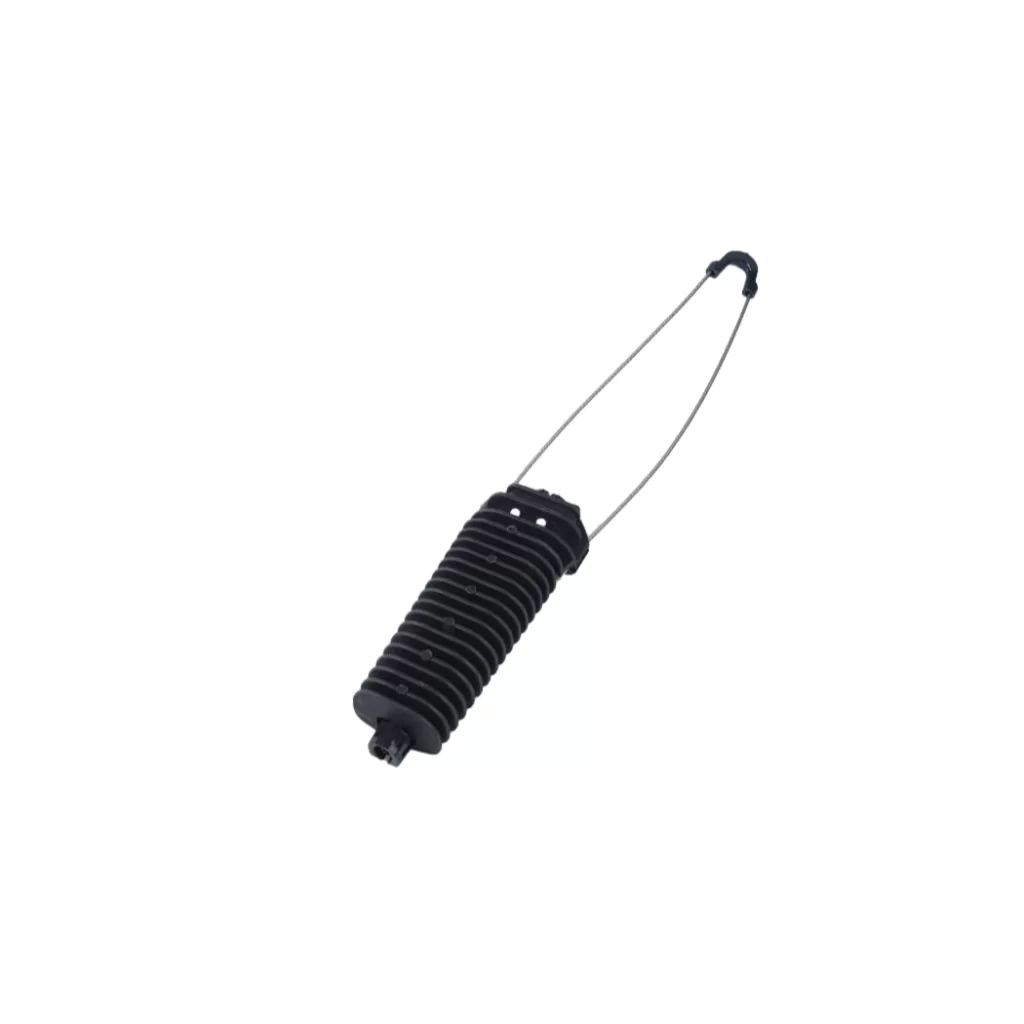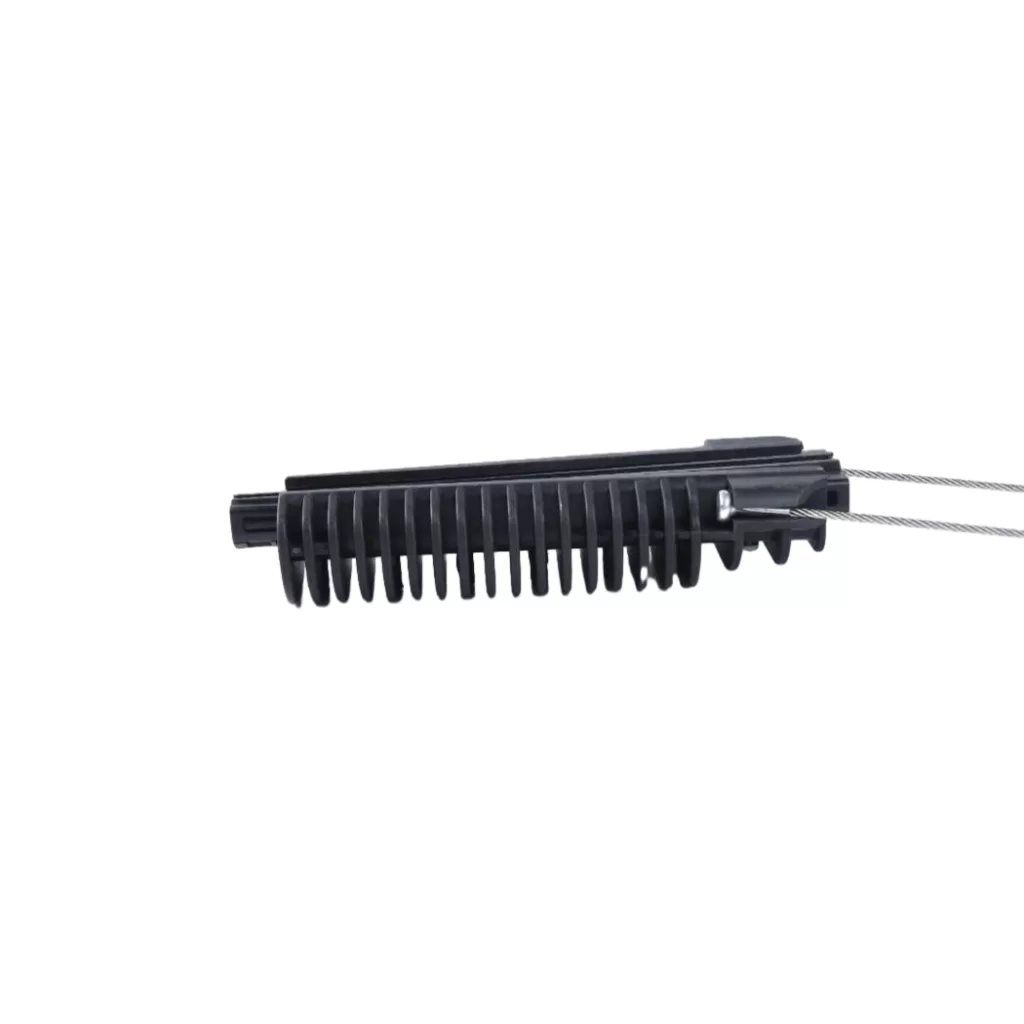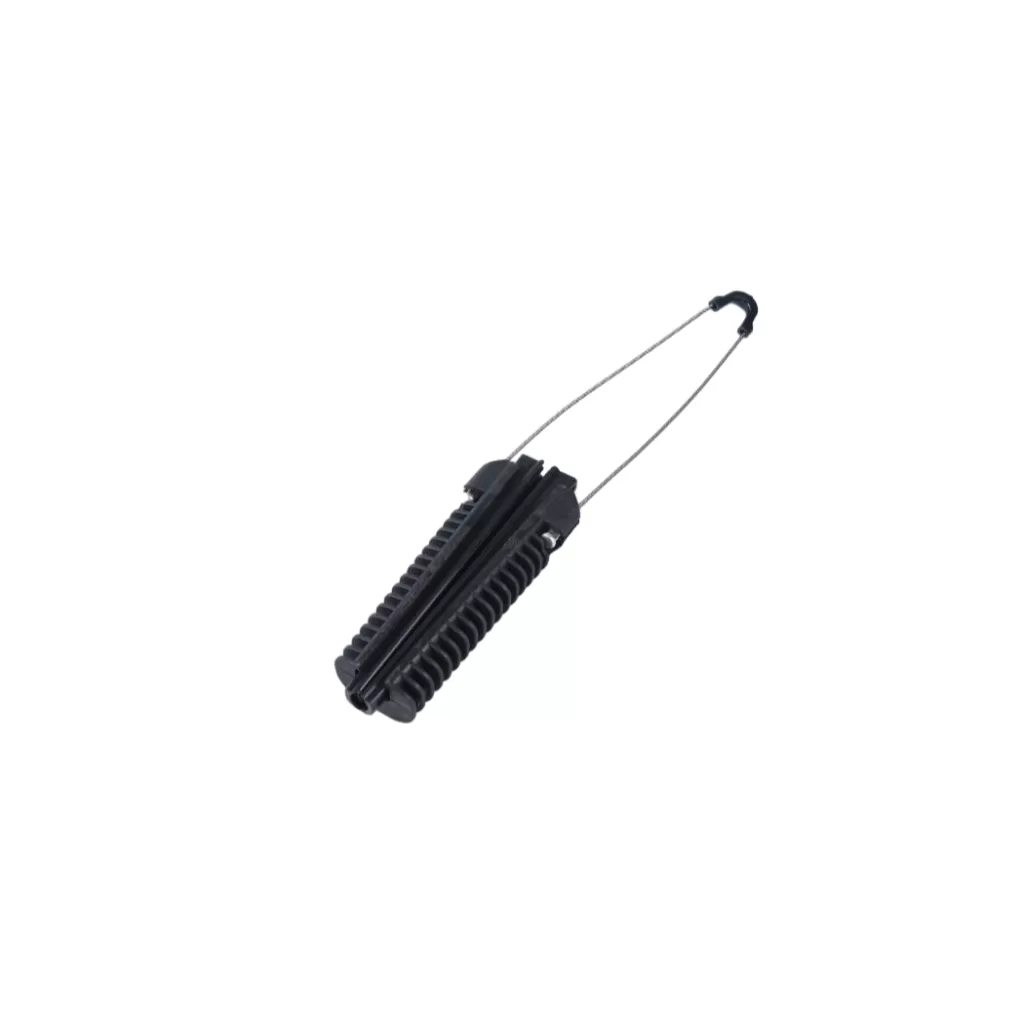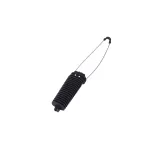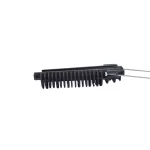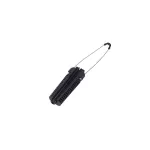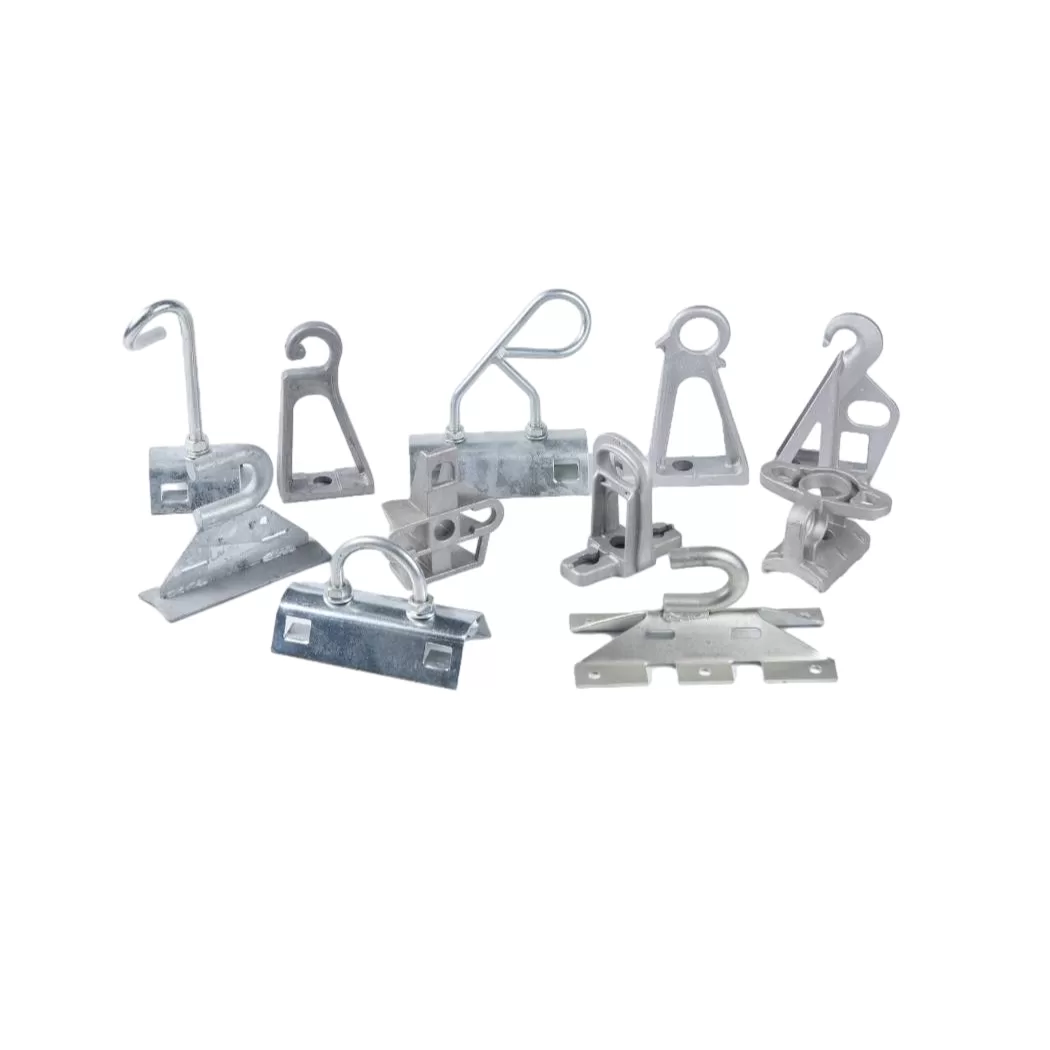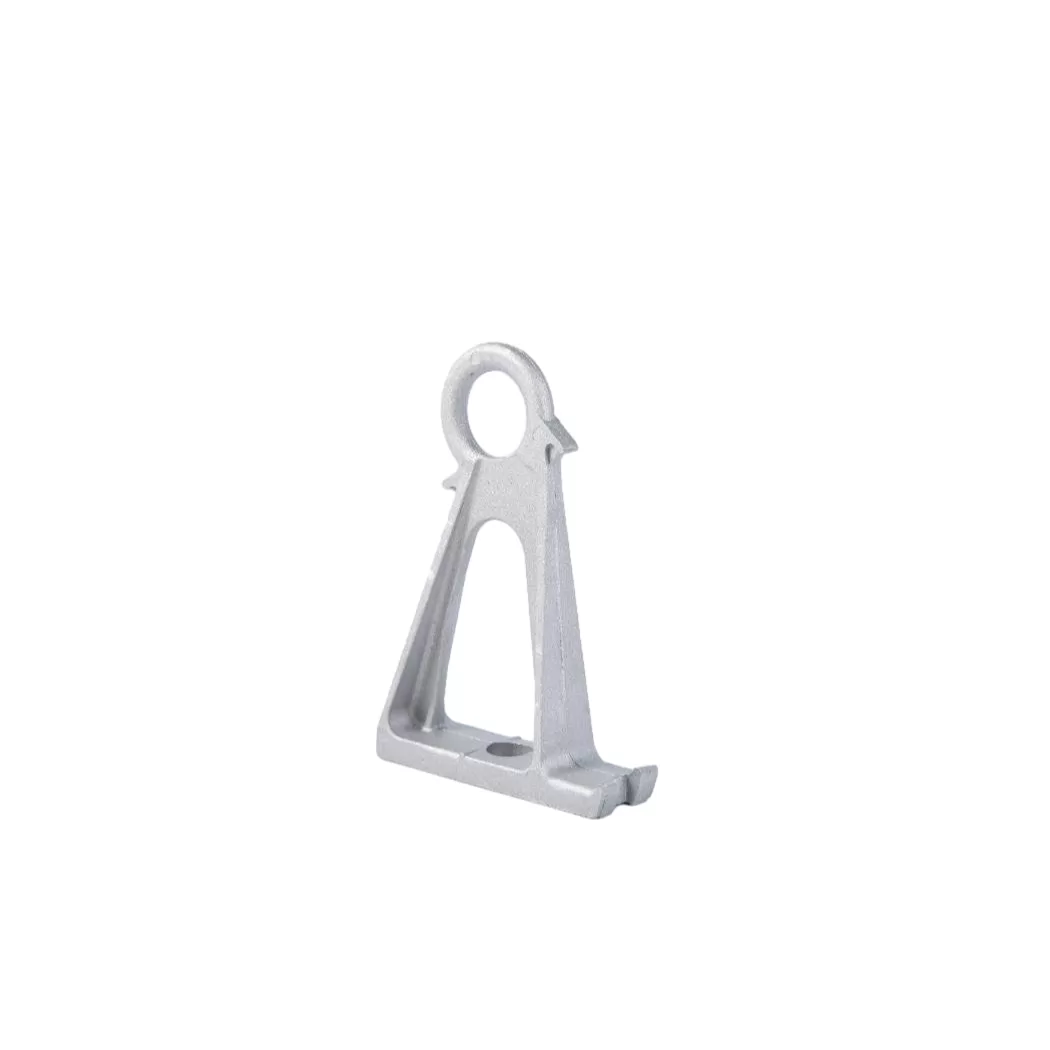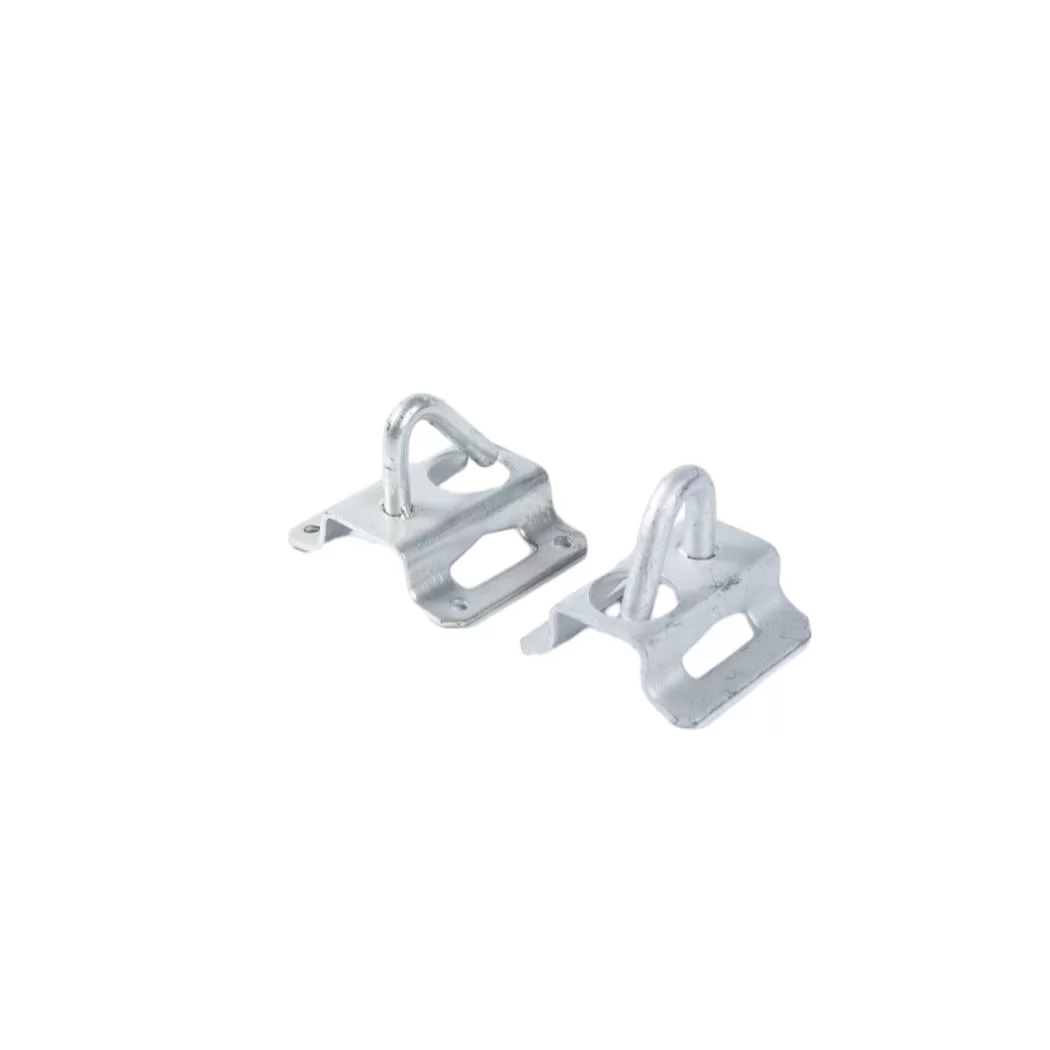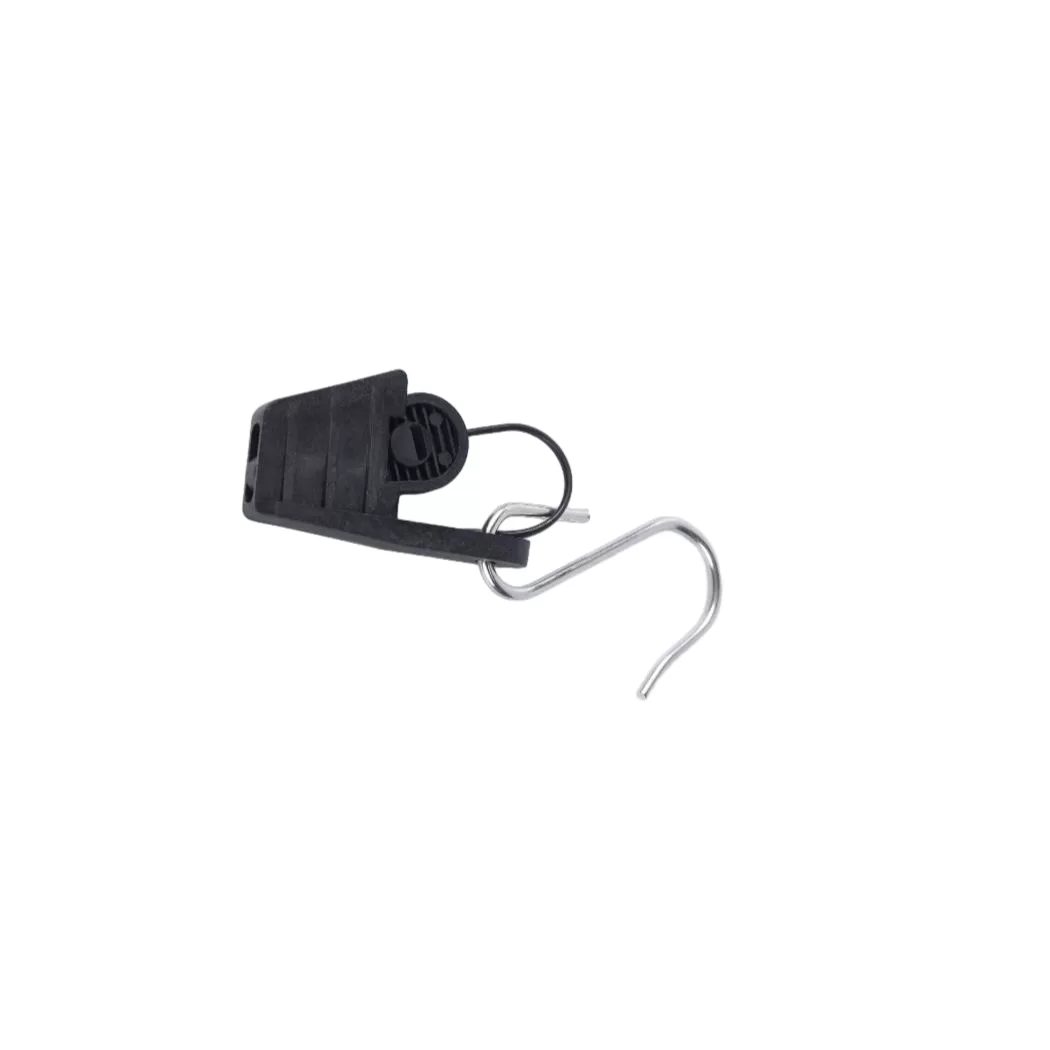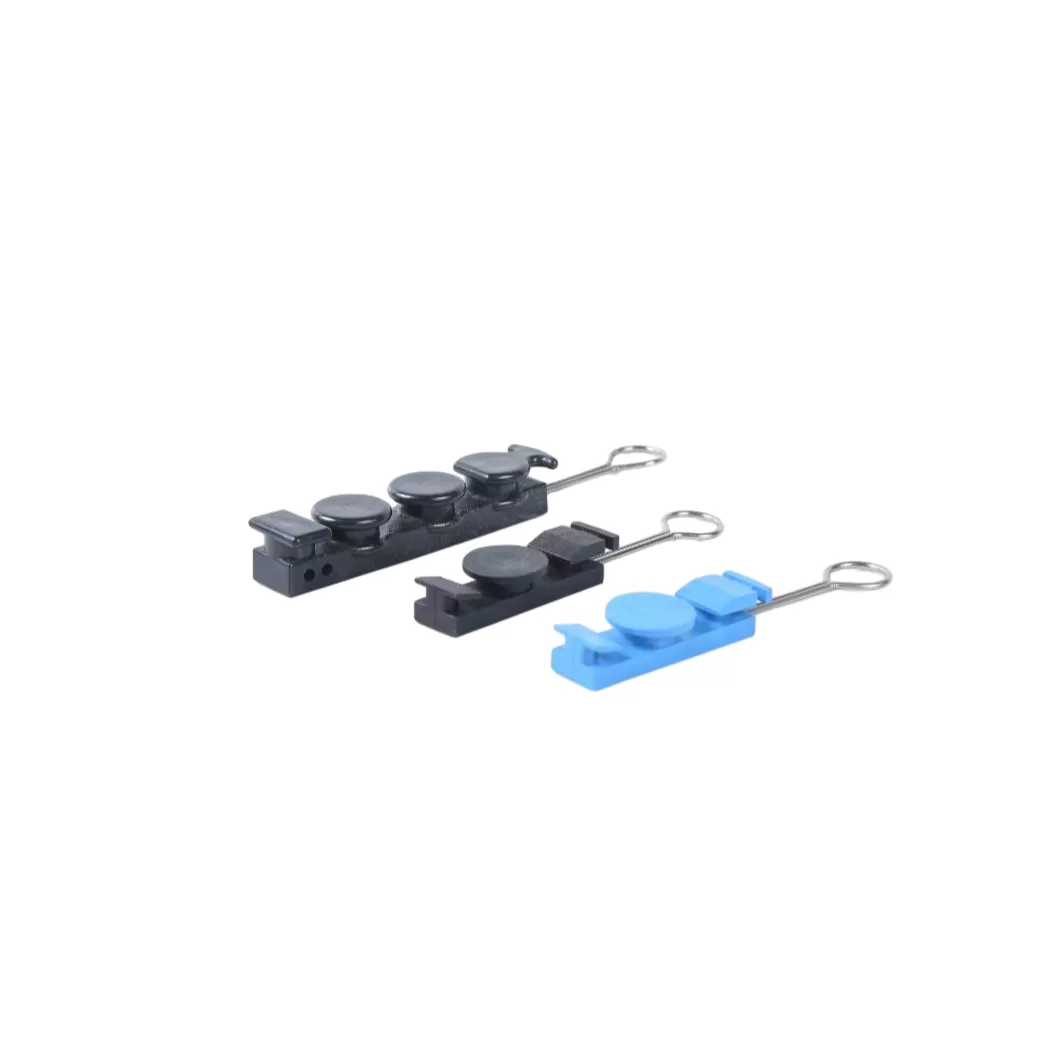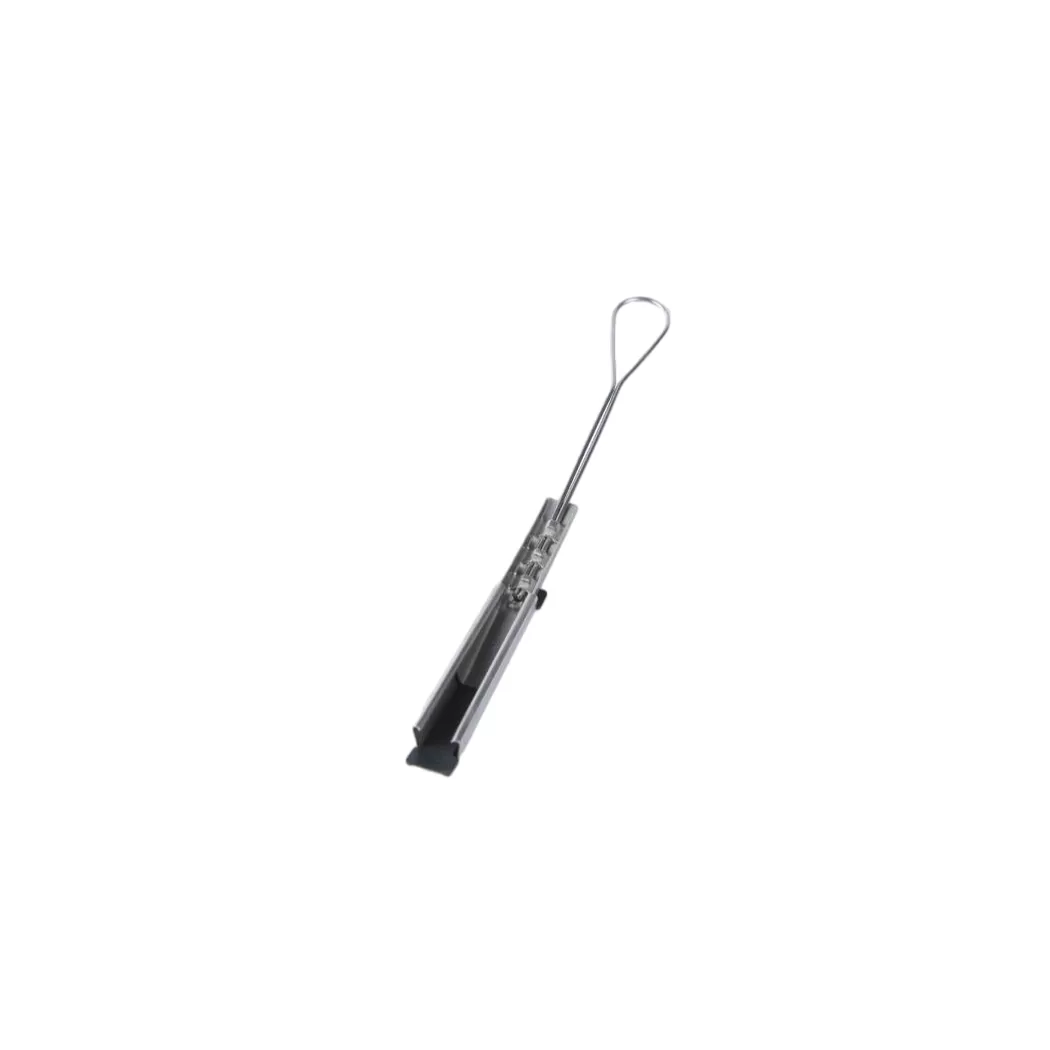| Clamp Type | Cable Diameter,mm | Materials | Min Breaking Load,KN | Bail length,mm | Packaging |
| PA-3000-1 | 8-12 | PA66, Stainless steel wire | 5 | 350 | 52*35*20cm,32pcs/carton |
| PA-3000-2 | 12-16 | PA66, Stainless steel wire | 5 | 350 | 52*35*20cm,32pcs/carton |
| PA-3000-3 | 16-20 | PA66, Stainless steel wire | 5 | 350 | 52*35*20cm,32pcs/carton |
APPLICATION
These clamps will be used as cable dead-end at end poles (using one clamp).Two clamps can be installed as double dead-end in the following cases :at jointing poles
at intermediate angle poles when the cable route deviates by more than 20°.
at intermediate poles when the two spans are different in lengths
at intermediate poles on hilly landscapes
Key Features:
- Dead-ending of 6 to 20 mm ADSS cables
- Minimum breaking load of 500/600 daN
- Installation on any pole hardware fitting
brackets, cross-arms or eye bolt with a min eye Ø of 15 mm4kV thimble as standard. 11 kV thimble available
All plastic parts are UV resistant and tested in conditions equivalent to min 25 years of service in tropical environment
BENEFITS:
- Light and compact products
- Easy, quick and safe dead-ending
- Installation takes seconds
- The flexible bail provides an extra protection to the cable against vibrations
- 4 kV or 11 kV insulation provided
These clamps are designed for dead-ending aerial ADSS cables on access networks when spans do not exceed 100m. Different capacities are available to adapt to the cable Ø.
Aerial networks are subject to repetitive climatic stress during several decades. The optical cable and its accessories, in particular the anchoring and suspension clamps, constitute an interdependent component of the complete system that must withstand during its all live time to the various loads induced by wind pressure, ice sleeve weight, Aeolian vibrations, temperature variations, and be resistant to corrosion, UV radiation.
The choice of accessories duly compatible with the cable and the use made of it is essential for a quick and safe installation, to facilitate the operation and ensure a long-term reliability of the network.

